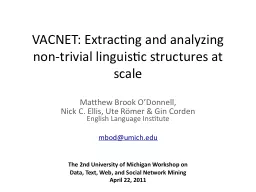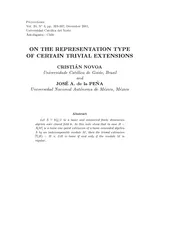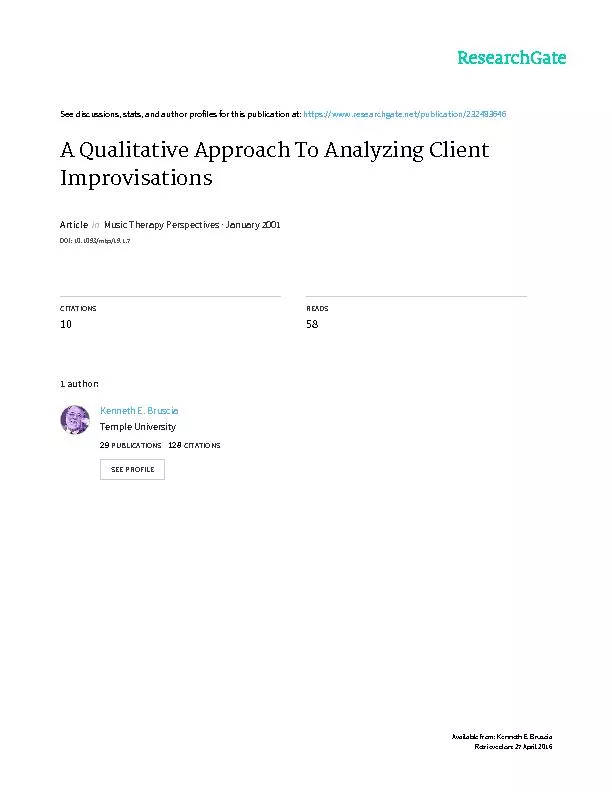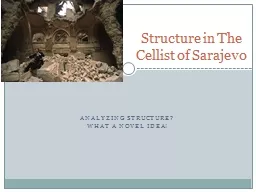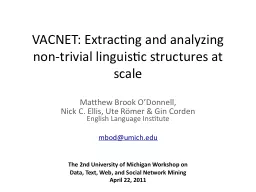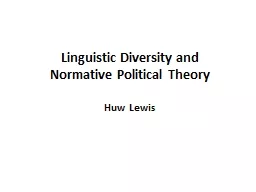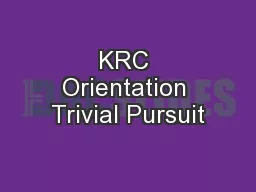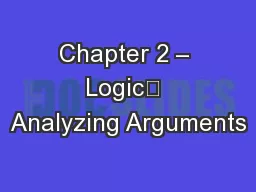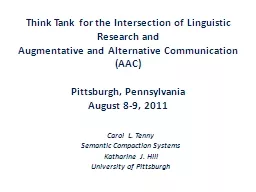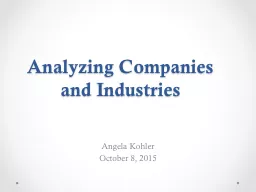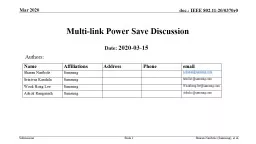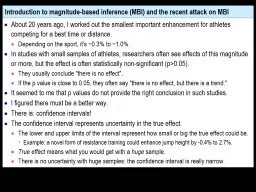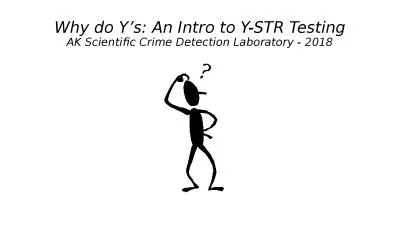PPT-VACNET: Extracting and analyzing non-trivial linguistic str
Author : giovanna-bartolotta | Published Date : 2016-07-31
Matthew Brook ODonnell Nick C Ellis Ute R ömer amp Gin Corden English Language Institute mbodumichedu The 2nd University of Michigan Workshop on Data Text Web
Presentation Embed Code
Download Presentation
Download Presentation The PPT/PDF document "VACNET: Extracting and analyzing non-tri..." is the property of its rightful owner. Permission is granted to download and print the materials on this website for personal, non-commercial use only, and to display it on your personal computer provided you do not modify the materials and that you retain all copyright notices contained in the materials. By downloading content from our website, you accept the terms of this agreement.
VACNET: Extracting and analyzing non-trivial linguistic str: Transcript
Download Rules Of Document
"VACNET: Extracting and analyzing non-trivial linguistic str"The content belongs to its owner. You may download and print it for personal use, without modification, and keep all copyright notices. By downloading, you agree to these terms.
Related Documents

